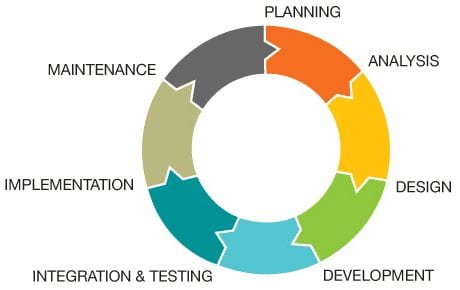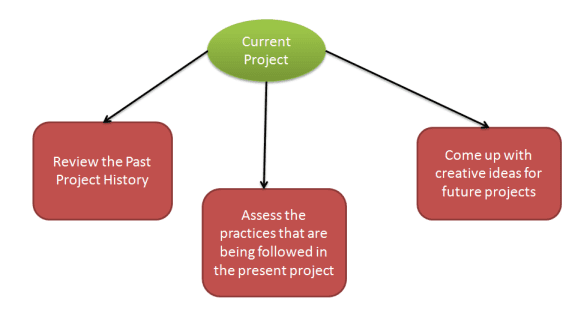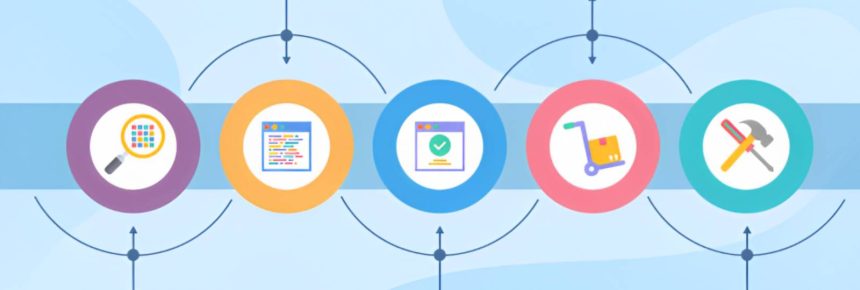software development life cycle (SDLC) is the process that software development teams use to design, develop, and maintain software.
The SDLC consists of several phases, each with its own set of tasks, goals, and deliverables.
- Planning: In this phase, the software development team defines the project’s objectives, identifies the requirements, and determines the scope of the project. This phase also involves establishing a project timeline, setting milestones, and identifying potential risks.
- Analysis: In this phase, the development team works with stakeholders to identify the requirements of the software. The team analyzes the needs of the users and creates a detailed description of the software’s features, functions, and specifications.
- Design: In this phase, the software’s architecture and overall design are developed. The design phase includes creating software diagrams, wireframes, and other documentation that outlines the software’s functionality, user interface, and database structure.
- Development: In this phase, the software is built and programmed using the specifications and design from the previous phases. The development phase includes coding, testing, debugging, and integration of various software components.
- Testing: In this phase, the software is thoroughly tested to ensure it meets the specified requirements and quality standards. The testing phase includes functional testing, performance testing, security testing, and user acceptance testing.
- Deployment: In this phase, the software is deployed to production environments and made available to end-users.
- Maintenance: In this phase, the software is monitored and maintained to ensure it continues to function as expected. This phase includes bug fixes, updates, and enhancements to the software.
Overall, the SDLC is a structured process that helps development teams produce high-quality software that meets user requirements and delivers business value.

What are the 5 Phases of the System Development Life Cycle?
The System Development Life Cycle (SDLC) consists of five phases:
- Planning: In this phase, the project is defined, and the feasibility of the project is determined. The project goals, objectives, and requirements are established, and the project schedule and budget are created. The planning phase is critical to the success of the project as it sets the foundation for the entire SDLC.
- Analysis: In this phase, the requirements for the system are gathered, analyzed, and documented. The current system is evaluated, and potential improvements are identified. The analysis phase ensures that the system’s functionality and features align with the business objectives and stakeholder requirements.
- Design: In this phase, the system’s architecture and design are created based on the requirements and analysis from the previous phases. The design includes the technical specifications, user interface, data structures, and other technical details necessary to build the system.
- Implementation: In this phase, the actual development of the system takes place, and the design is turned into a functional system. This phase includes coding, testing, integration, and configuration of the system. The implementation phase ensures that the system is developed according to the design and meets the established requirements.
- Maintenance: In this phase, the system is monitored and maintained to ensure that it continues to function as intended. This phase includes activities such as bug fixing, updates, enhancements, and user support. The maintenance phase ensures that the system remains relevant and valuable over its lifetime.
Overall, the SDLC is a structured approach to developing and maintaining systems that ensures that the system meets the requirements and delivers value to the stakeholders.
What Practices Will Help You Mitigate Risks at software development?
There are several practices that can help mitigate risks in software development. Here are a few examples:
- Risk Management Plan: Develop a comprehensive risk management plan that outlines the potential risks, their likelihood, and their impact on the project. The plan should include risk assessment, risk prioritization, risk mitigation, and contingency plans.
- Agile Development: Adopt Agile development methodologies, such as Scrum or Kanban, to break down the development process into smaller, manageable increments. This approach enables the team to identify and mitigate risks early in the development process.
- Continuous Testing: Implement continuous testing practices, such as unit testing, integration testing, and acceptance testing, to identify defects early in the development process. Automated testing can also help to reduce human errors and speed up the testing process.
- Code Review: Conduct regular code reviews to identify coding errors, security vulnerabilities, and compliance issues. Code reviews can also help to improve the overall quality of the codebase and reduce the risk of software failures.
- Documentation: Maintain comprehensive documentation throughout the development process to ensure that all project stakeholders have a clear understanding of the project’s requirements, design, and functionality. Good documentation can help to reduce misunderstandings, miscommunications, and rework.
- Communication: Establish clear communication channels between team members, stakeholders, and management to ensure that everyone is on the same page regarding project goals, progress, and risks. Good communication can help to identify risks early and enable effective risk mitigation strategies.
Overall, a proactive approach to risk management, combined with good development practices, can help to mitigate risks and improve the quality of software development projects.

Core Problems with Software Risk Management
There are several core problems that can arise with software risk management, including:
- Lack of Risk Awareness: Often, the risks associated with software development projects are not adequately identified or considered early enough in the development process. This can result in risks that are overlooked or not adequately addressed.
- Inadequate Risk Assessment: Even when risks are identified, they may not be assessed thoroughly or accurately. This can lead to ineffective risk mitigation strategies and an underestimation of the impact of risks on the project.
- Poor Risk Communication: Risks are often not communicated effectively to all stakeholders, which can lead to a lack of understanding of the potential impact of risks on the project. This can also result in ineffective risk mitigation strategies or a failure to address risks altogether.
- Lack of Ownership and Accountability: There may be a lack of ownership and accountability for risk management, resulting in a failure to implement effective risk mitigation strategies or a lack of follow-through on risk management plans.
- Overreliance on Tools and Processes: While risk management tools and processes can be helpful, they should not be relied upon solely to manage risks. There may be a tendency to become complacent and rely too heavily on tools and processes rather than engaging in critical thinking and proactive risk management.
Overall, effective software risk management requires a proactive approach that involves identifying and assessing risks early in the development process, communicating risks effectively to all stakeholders, taking ownership and accountability for risk management, and avoiding overreliance on tools and processes.










